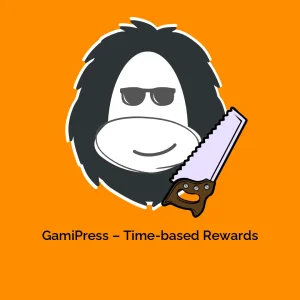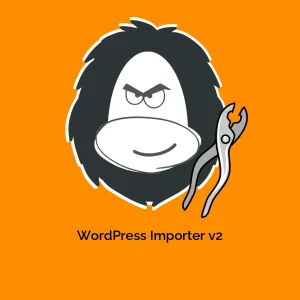Understanding Newsletter Webhooks: A Comprehensive Guide
In today’s digital landscape, effective communication with subscribers is vital for the success of newsletters. One way to optimize this process is through the implementation of webhooks. But what are webhooks, and how do they enhance newsletter management? Let’s delve into the fascinating world of Newsletter Webhooks and explore how they work, their configuration, and the benefits they offer.
What are Webhooks?
Webhooks can be succinctly defined as HTTP/HTTPS calls that your WordPress-based newsletter system sends to an external application when specific events occur. Essentially, they serve as a way to stream data in real-time to external systems, ensuring that any changes or updates in the newsletter-related activities are communicated instantly. The triggers for these webhooks in newsletter contexts typically include subscriber actions (like signing up or opting out), and the completion of a newsletter dispatch.
For example, whenever a new subscriber joins your mailing list, a webhook can notify an external system (such as a CRM) with pertinent subscriber details. This functionality can be extended to various other events, offering incredible flexibility and responsiveness.
Configuring Newsletter Webhooks
Setting up a webhook is a straightforward process. You need to follow a few simple steps. The key is knowing the precise URL you wish to call—this URL is typically provided by the external service you are integrating with.
-
Define the URL: This is where your webhook will send the data. For instance, you might use
https://externalapi.org/something. -
Select the Event: Decide which event should trigger the webhook. This could be any of the events mentioned earlier, such as subscription confirmation or cancellation.
-
Data Format Choice: Webhook calls can be configured to transmit data in formats like “standard HTTP POST” or “raw HTTP POST”. The standard method allows you to access the data easily, whereas the raw method sends a more complex JSON encoded body.
Whenever one of these predefined events occurs, the newsletter system makes a call to the specified URL, transmitting relevant subscriber or newsletter data. Importantly, calls are not processed in real-time but are scheduled to be sent promptly after the relevant trigger event.
This decoupled approach ensures that subscriber experience is not hindered. For instance, if a user signs up for a newsletter, a synchronous call might slow the process down, potentially leading to frustration. Thus, the asynchronous nature of these webhooks is key for maintaining a smooth user experience.
Testing Your Webhooks
Before going live with your webhooks, it’s wise to carry out some tests. Most systems provide a built-in test function that allows you to generate dummy data and confirm your configuration. Should anything not function correctly, error alerts typically indicate what went wrong, giving you the ability to troubleshoot effectively. Checking logs can provide further insight into any failures that might occur.
Data Being Sent: Subscriber Information
When a subscriber takes action—be that subscribing or unsubscribing—a variety of subscriber data will be transmitted. The data transmitted usually includes:
- Subscriber ID: A unique identifier for each subscriber.
- Name: The subscriber’s first or full name.
- Surname: The last name of the subscriber.
- Gender: The sex of the subscriber, if provided.
- Lists Associations: Listings indicating which newsletters or email lists the subscriber belongs to or does not belong to, encoded as binary values.
- Profile Fields: Any additional information that may pertain to the subscriber.
Understanding the data format and how to access this information through your external application is crucial.
Accessing Subscriber Data: HTTP POST
When using a standard HTTP POST request to transfer data, the endpoint should be able to handle the incoming request as though it were standard request fields. For instance, in a typical PHP environment, you might handle it like this:
php
$email = $_POST['email'];
$id = $_POST['id'];
It’s also a good practice to keep track of the incoming data. You can log the entire set of POST content, allowing for easy debugging and verification. An example of logging might look like this:
php
file_put_contents('debug.txt', print_r($_POST, true));
In cases where you choose to move towards JSON encoded HTTP POST methods for clarity and efficiency, the data extraction requires a slightly different approach. For instance (again in PHP), you might do something like:
php
$json_body = file_get_contents('php://input');
$data = json_decode($json_body, true);
$id = $data['id'];
$email = $data['email'];
With the evolution of how data is managed in web applications, understanding both methods of accessing data allows flexibility in how you integrate with various systems.
Understand the Newsletter’s Data
When a newsletter is sent, a range of data is available about that specific communication. Key fields include:
- Unique Newsletter ID: Distinct for every newsletter sent.
- Subject Line: What the newsletter is about.
- Content Message: The HTML message defining the newsletter’s body.
- Sent Count: How many emails were successfully dispatched.
- Open Count: The number of subscribers who opened the email.
- Click Count: The number of links clicked within the newsletter.
Integrating this data significantly enhances your ability to analyze newsletter performance and subscriber interaction.
Frequently Asked Questions
How Many Webhooks Can Be Defined?
In practice, there is virtually no limit to the number of webhooks you can set up. You can define as many as needed based on the diverse range of events and systems you want to connect with.
Troubleshooting Webhook Failures
Despite careful configuration, things can occasionally go awry. Newsletter plugins often have built-in logging functions to help diagnose problems quickly. You can check the logs in the appropriate control panel to understand what went wrong and adjust settings accordingly. It’s also valuable to set an adequate level of logging during the testing phase—setting it to debug mode lets you capture as much information as possible about any issues that arise.
Looking Forward: Future Events and Customization
One appealing aspect of webhooks in the context of newsletters is that they are highly customizable. As needs evolve, additional triggers can often be integrated to cater to emerging requirements or to enhance the functionality further. Whether it’s capturing additional subscriber metrics or integrating with new third-party platforms, webhooks offer a pathway to advanced features with minimal friction.
In Summary
Newsletter Webhooks present an ingenious method to synchronize newsletter activities with external systems, greatly enhancing communication efficiency and data insight. With the capability to automatically relay subscriber actions and newsletter performance metrics, these webhooks empower creators to refine their strategies based on real-time data.
Incorporating webhooks streamlines the management experience, allowing newsletter processors to focus on delivering quality content rather than getting bogged down by the mechanics of handling subscriber data transitions. By implementing well-structured webhooks, businesses can expect enhanced integrations, improved subscriber relations, and more effective data handling—all essential components in a successful newsletter strategy. Leveraging webhooks can therefore be seen not only as a technical upgrade but a strategic step toward building a responsive and engaging newsletter experience.
Download Newsletter – Webhooks Plugins for free
Certainly, downloading Newsletter – Webhooks for Free on OrangoGPL is absolutely possible and legal.
Truly, even downloading a cracked Newsletter – Webhooks is law-abiding, as the license it is distributed under is the General Public License, and this license permits the holder its free modification and resale.
Hence, there’s no cause to worry: If you were seeking to buy Newsletter – Webhooks cheaply or, directly, to download Newsletter – Webhooks Plugins nulled and, so, get it completely free, on OrangoGPL, you can do it easily and legally.
Download Newsletter – Webhooks GPL: A great choice for entrepreneurs just starting
Call it what you like best: Buying Newsletter – Webhooks on resale, download Newsletter – Webhooks Plugins GPL, download Newsletter – Webhooks without license or download Newsletter – Webhooks nulled.
It is something totally legal and something more than necessary for any entrepreneur beginning their journey.


-300x300.webp)



Reviews
There are no reviews yet.